Disclosure: We may earn commissions if you purchase products after clicking on a link from our site.
Ambush hunting for deer is a popular hunting method used by hunters when hunting deer. Deer hunters position themselves strategically in hiding spots near natural funnels, exit routes, bedding area. feeding area, or trails where there is deer traffic. They also blend in with camouflage and stay patient for peak success. Additionally, you should always consider wind direction and shooting distance for a stealthy approach.
In this article, we discuss ambush hunting for deer by sharing information and tips to help you be more successful when hunting for mature bucks using ambush hunting.
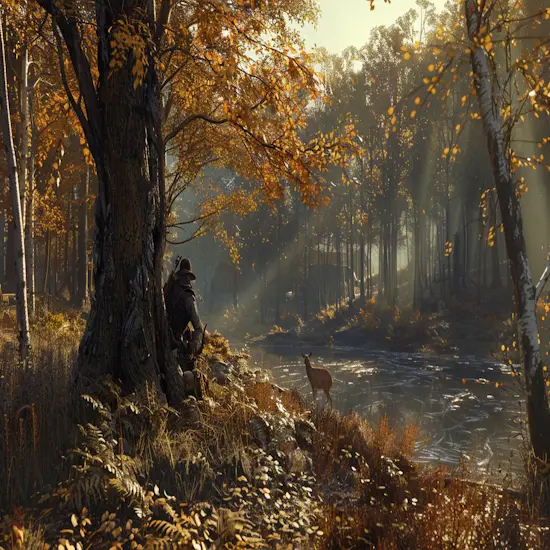
Table of Contents
Key Takeaways
- Select strategic ambush positions near deer travel routes or feeding areas.
- Utilize ideal hiding spots with good cover and visibility.
- Position downwind to avoid scent detection.
- Stay patient and minimize movements for success.
- Blend into surroundings and control noise to outwit deer.

Strategic Ambush Positions
When setting up strategic ambush positions, look for ambush spots where you can blend in seamlessly with your surroundings. Choose target observation points that offer clear views of travel routes or feeding areas where whitetail deer are likely to pass by.
Keep distance considerations in mind to make sure you’re within shooting range while minimizing the risks of being detected by mature whitetails.
Ideal Hiding Spots
Identifying ideal hiding spots is essential for executing successful ambush hunting strategies. When choosing your ambush spot, consider locations near natural funnels or pinch points along mature deer travel routes. Look for areas with heavy cover and visibility to set up your ambush.
Pit blinds stands, or fixed blinds can offer strategic advantages depending on the terrain and the deer’s behavior in the area. Remember to factor in the wind direction to stay downwind of the mature whitetail buck and minimize your scent.
Target Observation Points
To improve your success in ambush hunting, pinpoint strategic observation points where you can anticipate the movement of white-tailed deer and position yourself effectively for a successful hunt. Choose locations near feeding areas, trails, or funnels along travel routes where a big deer is likely to pass. Look for a thick cover like a bush or tree to conceal your position. Consider the wind direction to avoid being detected by scent.
Select tree stands or ground blinds that offer good visibility and shooting lanes. Stay patient and alert, keeping movements to a minimum. By carefully selecting your target observation points, you increase your chances of a successful ambush hunting experience.
Distance Considerations
Consider your target’s proximity and movement patterns when strategically positioning yourself for an ambush hunt. To maximize success, choose a location within ideal shooting distance based on your weapon’s range and your shooting skills.
For deer, focus on travel routes, escape routes, or feeding areas to anticipate their movement. Identify funnels or pinch points along these paths to increase your chances. The setup of your ambush position should be influenced by the specific species’ wariness level and the distance you need to be effective.
Keep in mind factors like scent, visibility, and noise to remain undetected. By selecting the right distance and position, serious deer hunters can increase the likelihood of a successful deer ambush.
Minimizing Detection Risks
Minimize the risks of detection by strategically positioning yourself to ambush your prey effectively. Select ambush locations that provide cover and concealment, such as near travel routes or feeding areas.
Utilize ground blinds or tree stands to hide from the prey’s sight and position yourself downwind to avoid being detected by smell. Consider the quarry’s wariness level and required proximity for a successful ambush.
Stay patient and avoid unnecessary movements that could alert the animals. By understanding the three Ss – smell, sight, and sound – you can increase your chances of remaining undetected.

Understanding Deer Behavior
Understanding deer behavior is key to successful ambush hunting. By recognizing their resting and feeding habits, whitetail hunters can strategically position themselves for a good chance of success.
Analyzing travel patterns, observing rut phases, and executing your ambush strategy all hinge on your understanding of deer behavior.
Resting and Feeding Habits
What are the key behaviors to observe when learning about deer’s resting and feeding habits?
- Resting Habits:
- Deer often rests in secluded areas during the daylight hours.
- They prefer thickets or areas with good cover for resting.
- Avoid disturbing these resting spots to prevent spooking deer.
- Resting periods are vital for deer to conserve energy.
2. Feeding Habits:
- Deer are most active during dawn and dusk for feeding.
- Look for areas with fresh green vegetation for feeding opportunities.
- Pay attention to feeding patterns to predict deer movement.
- Setting up near feeding areas increases the chances of a successful ambush.
Observing these habits can help you strategically plan your ambush hunting tactics for deer.
Travel Patterns Analysis
When analyzing deer behavior, focus on their travel patterns to pinpoint strategic ambush locations. Understanding where deer move can lead you to successful hunting spots. Deer often follow specific routes between bedding and feeding areas, making these transfer points prime ambush locations.
Look for natural funnels, trails, or crossings along these travel paths. By observing and analyzing these patterns, you can anticipate where deer are likely to pass through, increasing your chances of a successful hunt. Pay attention to the time of day, weather conditions, and seasonal changes that may influence deer movement patterns. Utilize this knowledge to strategically position yourself for a successful ambush.
Rut Phase Observation
To maximize your hunting success, focus on observing the rut phases of deer to enhance your understanding of their behavior.
Here are some key points to contemplate:
- Pre-Rut Phase: Bucks start marking territory and sparring to establish dominance.
- Peak Rut Phase: Bucks actively seek does for mating, increasing movement.
- Post-Rut Phase: Bucks may be exhausted, focusing on recovery and feeding.
- Observation Tips: Watch for increased deer activity, changes in buck behavior, and signs of mating activity like scrapes and rubs.
Ambush Strategy Execution
When setting up your ambush for deer hunting, remember that selecting the right position is vital for success. Utilize effective camouflage techniques to blend in with your surroundings and remain undetected. Practice patience as you wait for the perfect opportunity to strike, all while understanding the behavior of your prey.
Position Selection Importance
Understanding deer behavior is crucial for selecting the right position when executing an ambush strategy.
- Choose positions along travel routes or feeding areas.
- Focus on locations with excellent visibility.
- Consider wind direction to prevent scent detection.
- Make sure your position allows for a clear shot opportunity.
Camouflage Effectiveness Tips
For essential effectiveness in executing an ambush strategy for deer hunting, consider the ideal role that camouflage plays in blending into your surroundings. Choose camouflage patterns that match your hunting environment to avoid standing out.
Stay still and limit unnecessary movements to evade detection. Utilize natural cover like bushes and trees to break up your outline. Remember, effective camouflage can greatly increase your chances of a successful ambush.
Patience Key for Success
Blend seamlessly into your surroundings to enhance your chances of a successful ambush when executing deer hunting strategies.
- Stay Still: Patience is key; avoid unnecessary movements.
- Control Breathing: Stay calm and regulate your breath to remain undetected.
- Mind Noise Levels: Keep quiet to prevent alerting deer.
- Observe Diligently: Stay vigilant and watch for any signs of approaching deer.
Understanding Prey Behaviors
To effectively execute an ambush strategy when hunting deer, keen observation of their behavior is essential for positioning yourself strategically. Understanding deer behaviors like feeding patterns and travel routes can help you anticipate their movements and choose the best ambush location.
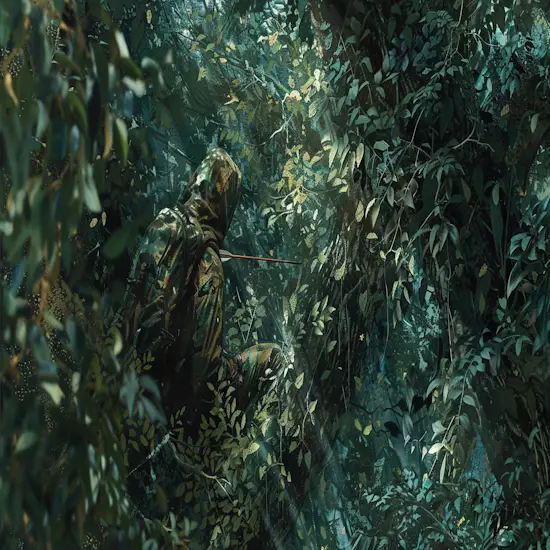
Ambush Location Selection
When selecting ambush locations for deer hunting, consider:
- Ideal hiding spots
- Strategic blind placement
- Evaluating camouflage effectiveness
- Utilizing sound concealment methods
Your success relies on choosing positions that maximize the deer’s predictable movements and vulnerabilities. By grasping the significance of these points, you can improve your chances of a successful ambush hunt.
Optimal Hiding Spots
For ultimate success in ambush hunting, identifying strategic hiding spots along game animal travel routes is vital. When selecting your hiding spot, consider the following:
- Funnel Points: Look for areas where the terrain naturally funnels game animals, increasing the likelihood of them passing close to your position.
- Cover and Concealment: Opt for hiding spots that provide sufficient cover to blend in with your surroundings and conceal your movements.
- Visibility: Confirming your hiding spot allows you to see approaching game animals clearly, allowing you to prepare for the perfect shot.
- Accessibility: Choose hiding spots that are easily accessible yet offer a good vantage point for a successful ambush.
Strategic Blind Placement
Identifying strategic hiding spots for ambush hunting involves the precise selection of blind locations along game animal travel routes. When choosing where to place your blind, focus on funnels or pinch points that naturally guide animals. Consider the quarry’s behavior and required shooting range.
Opt for fixed blinds for stability or pit blinds for added concealment. Stands offer elevation for better visibility. Remember the three Ss – smell, sight, and sound – to remain undetected. Position your blind downwind to avoid being sniffed out, and minimize movements to evade visual detection.
Camouflage Effectiveness Assessment
To assess the effectiveness of camouflage in selecting ambush locations, consider the terrain and vegetation for best concealment.
- Terrain Evaluation: Look for spots with natural cover like bushes or trees.
- Vegetation Assessment: Choose locations with dense foliage for best blending.
- Color Matching: Make sure your camouflage matches the surroundings for seamless integration.
- Texture Consideration: Select patterns that break up your outline effectively in the chosen environment.
Sound Concealment Methods
When selecting ambush locations, prioritize sound concealment methods to avoid alerting your quarry and improving your chances of a successful hunt. Choose spots with natural barriers like thick vegetation to muffle noises from your movements. Avoid stepping on dry leaves or twigs that could give away your position.
Position yourself where the terrain can absorb sound, such as near rocky outcrops or dense shrubbery. Stay mindful of your gear, ensuring it doesn’t clink or rattle. Being essential can be as vital as being hidden.
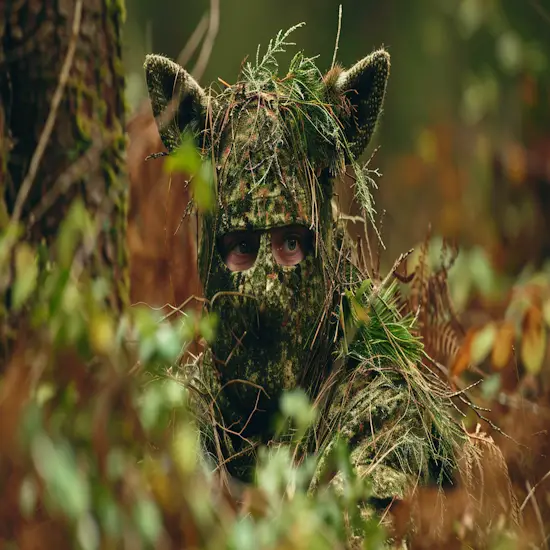
Camouflage and Concealment
When preparing for ambush hunting, your selection of camo gear is vital for seamlessly blending into the environment. You need to master concealment techniques to stay undetected by your prey. It’s important to minimize movement and blend in with the natural surroundings for a successful ambush.
Camo Gear Selection
For peak success in ambush hunting, selecting the right camo gear that enhances camouflage and concealment is crucial. Here are key factors to keep in mind when choosing your camo gear:
- Environment Matching: Opt for camo patterns that blend with your hunting area.
- Seasonal Adaptation: Select gear that matches the colors of the current season.
- Layering Options: Choose versatile gear that allows you to add or remove layers based on weather conditions.
- Material Quality: Invest in durable, silent fabrics that won’t give away your position.
Concealment Techniques
To enhance your ambush hunting success, mastering effective concealment techniques through camouflage and concealment is essential.
When preparing for your hunt, choose camouflage that matches the environment where you plan to ambush deer. Blends of browns, greens, and even some black can help you disappear into the surroundings. Utilize natural materials like branches, leaves, and grass to further conceal your position.
Pay attention to your silhouette and break it up by adding natural elements to your gear or creating a blind. Remember to stay still and avoid unnecessary movements that could give away your location.
Natural Environment Blending
Blending in with the natural environment through effective camouflage and concealment is essential for increasing your success in ambush hunting for deer. Here are some key strategies to help you seamlessly blend into your surroundings:
- Choose Appropriate Camouflage: Select camouflage patterns that match the vegetation in your hunting area.
- Utilize Natural Cover: Position yourself near trees, bushes, or other natural features to break up your outline.
- Stay Still and Silent: Minimize movement and avoid unnecessary noise to avoid detection.
- Opt for Concealment Gear: Use blinds, ghillie suits, or face masks to further conceal your presence.
Movement Minimizing Strategies
Using effective camouflage and concealment techniques is essential for minimizing movement and increasing your success in ambush hunting for deer.
Choose camo that matches your hunting environment, breaking up your outline against the backdrop. Utilize natural materials like branches and leaves to blend in seamlessly.
Stay still and avoid sudden movements; deer are sensitive to motion. Position yourself strategically to stay hidden and minimize your profile.
Use shadows and cover to your advantage, staying out of direct sight. Remember, successful ambush hunting relies on your ability to remain undetected, so master the art of camouflage and concealment for a fruitful hunt.
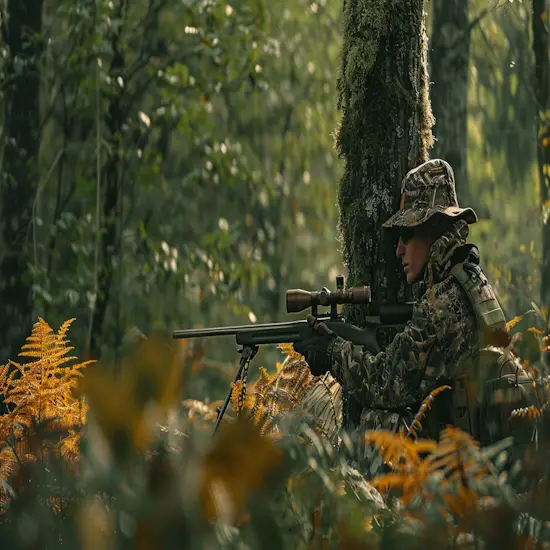
Tactical Gear and Preparation
When preparing for ambush hunting, it’s important to focus on:
- Gear selection
- Tactical clothing choices
- Equipment maintenance tips
- Having an essential gear checklist
Your success in the field can greatly depend on the gear you choose, so make sure you have the right tools for the job. Taking the time to prepare your tactical gear properly can make all the difference in your hunting experience.
Gear Selection Importance
Choosing the correct tactical gear and adequately preparing are key factors in improving your hunting effectiveness and success rates. Here are four essential considerations for gear selection:
- Camouflage: Opt for gear that matches your hunting environment to blend in effectively.
- Comfort: Prioritize comfortable gear to guarantee prolonged periods of alertness and focus.
- Durability: Select high-quality, durable gear that can withstand rugged terrains and weather conditions.
- Functionality: Choose gear that enhances your hunting capabilities, such as scopes, range finders, or backpacks with ample storage.
Tactical Clothing Choices
To enhance your hunting effectiveness and readiness, contemplate the importance of selecting tactical clothing that complements your surroundings and maximizes your stealth capabilities.
Opt for clothing that matches the environment you’ll be hunting in, such as camouflage patterns that blend seamlessly with the foliage. Choose moisture-wicking fabrics to stay dry and comfortable during long waits. Make sure your clothing is durable and quiet to prevent any unnecessary noise that could startle your prey.
Layering your clothing allows you to adjust to changing weather conditions and maintain peak body temperature. Remember, your choice of tactical clothing can greatly impact your ability to remain undetected and increase your chances of a successful ambush hunt.
Equipment Maintenance Tips
How can you ensure the longevity and peak performance of your tactical gear through proper maintenance practices? Here are four essential tips to keep your equipment in top shape:
- Regular Cleaning: Wipe down your gear after each use to remove dirt, debris, and moisture.
- Inspect for Damage: Check for wear and tear, loose parts, or any signs of damage that may impact performance.
- Lubrication: Keep moving parts lubricated to prevent rust and ensure smooth operation.
- Proper Storage: Store your gear in a dry, well-ventilated area to prevent mold, mildew, and rust from developing.
Essential Gear Checklist
Guarantee your essential gear is in top condition by following these vital maintenance practices.
Before heading out, make certain your firearms are clean and well-oiled. Check your optics for any dirt or damage, and calibrate them for accuracy.
Pack necessary items like a reliable knife, first aid kit, and survival gear. Dress appropriately for the weather and terrain, with camouflage to blend in seamlessly. Opt for comfortable and durable footwear to navigate quietly.
Carry a backpack with water, snacks, and extra ammunition. Stay organized with a hunting license, permits, and a map of the area.
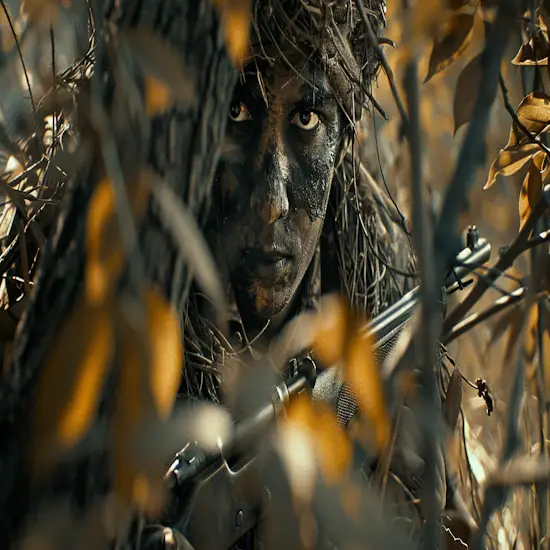
Ambush Vs. Still-Hunting
When deciding between ambush and still-hunting, remember that ambush hunting offers distinct advantages over still-hunting. The element of surprise and the ability to patiently wait for your target give ambush tactics an edge. Success in ambush hunting hinges on your stealth, strategic positioning, and unwavering patience.
Ambush Advantages Over Still-Hunting
Ambush hunting offers distinct advantages over still-hunting by capitalizing on predictable animal movements and strategic positioning for increased hunting success.
- Higher Success Rate: Ambush hunting increases your chances of a successful hunt due to positioning near high-traffic areas.
- Less Physical Exertion: Compared to still-hunting, ambush hunting requires less movement, conserving your energy.
- Better Shot Opportunities: By setting up in advance, you can guarantee better shot placement when the target comes into view.
- Reduced Disturbance: Ambush hunting minimizes disturbances to the hunting environment, keeping the area calmer for potential game sightings.
Stealth in Ambush Hunting
Utilizing stealth plays an essential role in distinguishing between ambush hunting and still-hunting techniques.
In ambush hunting, you strategically position yourself along game trails or feeding areas, remaining hidden until your target comes within range. This method requires patience and a deep understanding of your prey’s behavior to predict their movements accurately. By moving slowly and quietly, you increase your chances of a successful ambush by avoiding detection.
In contrast, still-hunting involves slowly stalking your prey, requiring similar stealth but with continuous movement. Mastering stealth in ambush hunting involves blending into your surroundings, controlling your scent, and minimizing noise to outwit your target and achieve a successful hunt.
Positioning for Ambush Success
To increase your chances of a successful hunt, mastering the art of positioning is pivotal in distinguishing between ambush hunting and still-hunting techniques. Here’s how you can position yourself for ambush success:
- Identify Strategic Locations: Locate funnels or pinch points along travel routes.
- Choose the Right Hiding Position: Select between fixed blinds, pit blinds, or elevated stands based on the quarry and distance needed.
- Consider the Quarry’s Senses: Account for smell, sight, and sound to avoid detection.
- Stay Patient and Still: Minimize movement to prevent animals from detecting your presence.
Patience in Ambush Tactics
When mastering ambush tactics, patience becomes a critical element in distinguishing between ambush hunting and still-hunting techniques.
Ambush hunting involves waiting in a strategic location for your prey to come within range, requiring you to remain still and quiet for extended periods. This technique contrasts with still-hunting, where you actively move through the terrain to locate and stalk your target.
In ambush hunting, your ability to wait patiently for the right moment is key to success. By understanding your prey’s habits and choosing a well-concealed position, you increase your chances of a successful hunt.
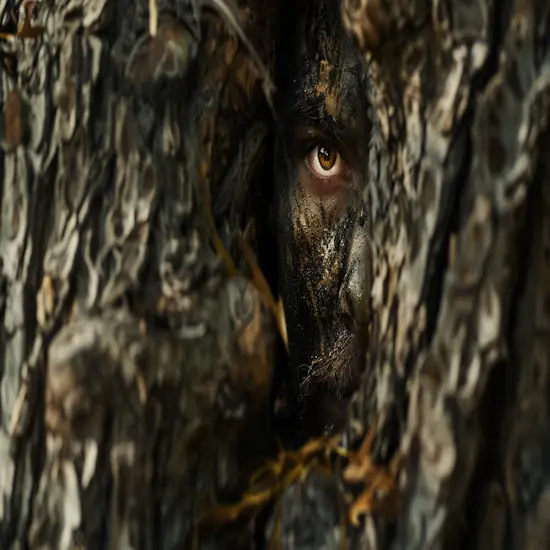
Stalking and Ambushing Techniques
When stalking game, focus on stealth and patience to get within range for a successful shot. Selecting the right ambush location is essential for maximizing your chances of a successful hunt. Remember to utilize camouflage to blend into your surroundings and maintain precision for a successful outcome.
Stalking Techniques Overview
Stalking and ambushing techniques combine stealth and patience to outsmart game animals in their natural habitats. When stalking your prey, consider the following overview:
- Move Slowly: Take deliberate, quiet steps to avoid alerting the animals.
- Use Cover: Utilize natural elements like trees, bushes, and terrain to remain hidden.
- Stay Downwind: Position yourself so the animals can’t catch your scent.
- Observe: Study the animal’s behavior and movements to anticipate their next actions.
Ambush Location Selection
To improve your hunting success, carefully select strategic ambush locations that capitalize on the predictable movements of game animals. Look for funnels or pinch points along their travel routes where they’re likely to pass through.
Consider setting up near feeding areas for more shot opportunities. Choose hiding positions like blinds or stands based on the animal’s wariness and the proximity needed for a successful shot. Keep in mind factors like smell, sight, and sound when selecting your position.
Patience and Precision
For successful hunting expeditions, your key to mastering ‘Patience and Precision’ lies in understanding the art of ambushing techniques. To effectively employ patience and precision in your hunting strategies, consider the following:
- Stalking Techniques: Move slowly and quietly towards your target, using cover to remain undetected.
- Positioning: Choose a spot within shooting range that provides a clear line of sight to anticipated animal movement paths.
- Timing: Be patient and wait for the perfect opportunity to take your shot, avoiding impulsive actions.
- Shot Placement: Aim for essential areas of the animal to ensure a quick and ethical kill.
Camouflage for Concealment
Camouflage plays an essential role in concealing your presence during hunting expeditions, enhancing your chances of a successful ambush. To blend into the surroundings effectively, choose camouflage patterns that match the hunting environment.
Utilize natural foliage to break up your silhouette and avoid shiny or reflective surfaces that could give away your position. Stay still and use available cover to remain hidden from keen animal eyesight.
Remember to adjust your camouflage based on the season and terrain. By mastering the art of camouflage, you increase your ability to stalk and ambush game successfully. A well-executed camouflage strategy can make the difference between a missed opportunity and a triumphant hunt.
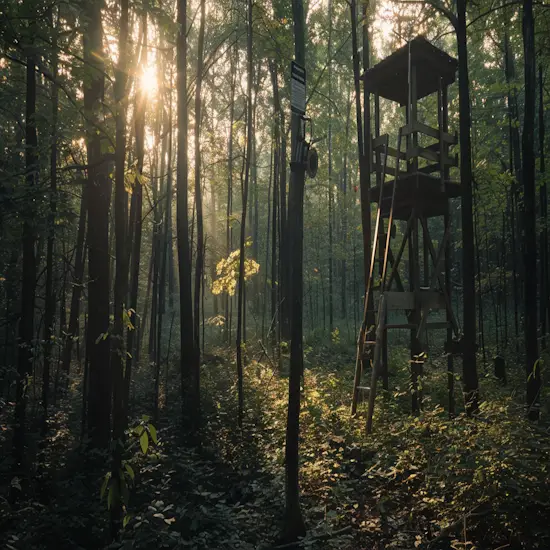
Off-Season Monitoring & Practice
You should make a habit of observing animal behaviors and tracking their movements during the off-season. By studying these habits, you can plan your ambushes more effectively based on the animals’ likely patterns. Practicing your skills during the off-season can greatly enhance your chances of success when hunting.
Observation of Habits
Studying game movements during the off-season can greatly enhance your understanding of animal behavior for more successful ambush hunting strategies. Here’s how you can benefit from observing habits:
- Time of Activity: Note when animals are most active to plan your ambush effectively.
- Preferred Feeding Areas: Identify where animals feed most frequently for strategic positioning.
- Travel Routes: Study the paths animals take between bedding and feeding areas for ambush placement.
- Interaction with Environment: Observe how animals respond to changes in weather, human presence, or other stimuli to anticipate their movements.
Tracking Animal Movements
To effectively track animal movements during the off-season, observe their patterns and behaviors in various habitats. Spend time studying where they feed, rest, and travel. Take note of the paths they frequent and the times of day they’re most active. Look for signs like tracks, droppings, and disturbances in the vegetation.
Behavior-Based Ambush Planning
For effective off-season monitoring and practice in behavior-based ambush planning, focus on observing and analyzing game animals’ movements and habits in their natural habitats.
- Observe Patterns: Track daily routines and preferred areas.
- Analyze Behavior: Study interactions with surroundings and other animals.
- Identify Key Locations: Pinpoint feeding spots and travel routes.
- Practice Stealth: Hone your ability to move quietly and remain undetected.
Seasonal Practice Importance
Practice stealth and observation in the off-season to enhance your hunting skills through seasonal monitoring and practice. Off-season monitoring allows you to understand deer patterns, feeding locations, and travel routes. By observing from a distance, you can avoid disturbing their natural behavior and adapt your hunting strategies accordingly.
Use this time to scout potential ambush locations, set up trail cameras, and familiarize yourself with the terrain. Implementing these practices will give you a strategic advantage when the hunting season begins. Stay attuned to changes in the environment, such as new food sources or altered movement patterns, to refine your approach. Consistent off-season practice will sharpen your skills and increase your chances of a successful deer hunt.
The Bottom Line
Ambush hunting for deer is a hunting method used when hunting for deer. It allows you to hide yourself and wait for deer using the element of surprise. Deer hunters master the art of ambush hunting for deer by strategically positioning themselves, understanding deer behavior, selecting ambush locations, perfecting camouflage and concealment, preparing with tactical gear, and practicing stalking techniques.
By implementing ambush hunting tactics, deer hunters improve their hunting skills and techniques, as well as enhancing their hunting game, and increase their chances of a successful deer harvest.
You can also learn and improve your still hunting skills by reading still hunting for deer. Similarly, you can also read about spot and stalk hunting for deer and deer drives for deer hunting.
